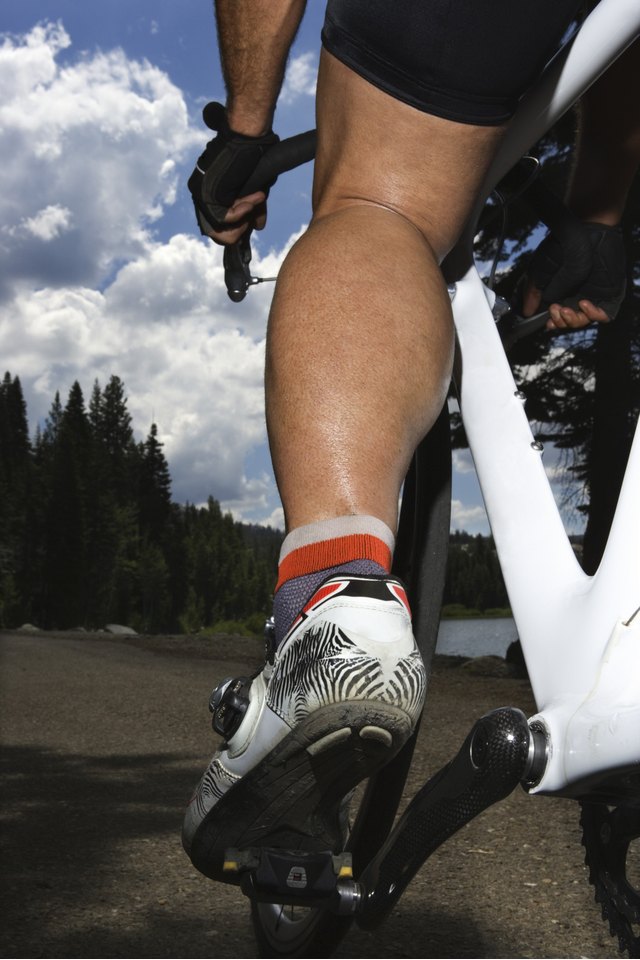Should Calf Raises Be Slow or Fast?

Calf raises can be performed in a variety of ways. When done correctly, calf raises are performed slowly and smoothly. This exercise will benefit your calf muscles in the back of your lower leg, as well as your Achilles tendons. This additional strength helps prevent leg and ankle injuries.
Benefits
Your calf contains a major muscle called the gastrocnemius. This muscle can benefit greatly from slow but explosive exercises. After you learn a calf raise technique, you can increase the benefit by using more force and power with each slow movement.
Movement
To perform a calf raise, stand facing a wall with your feet between 6 and 12 inches from the wall. Your feet should be directly under your hips. With your hands shoulder-width apart and at the same height as your shoulders, place your palms against the wall to assist with balance. All movements during calf raises should be done using slow, controlled motions. As you slowly exhale, move upward and raise yourself up onto your toes. Your feet should face forward and your knees should not be bent. Hold this position for a few seconds, and then slowly lower yourself into the starting position. Repeat this movement 10 to 15 times, then rest.
Weights
You can also perform calf raises with weights for additional resistance and strength building. Slowly pick up and set down the weights before and after this exercise. A 3- to 5-pound dumbbell should be held firmly in each hand, with your arms fully extended down at your sides. Keep your arm and shoulder muscles engaged, but do not raise your hands during this exercise.
To perform a step calf raise, stand on the edge of a step with your heels hanging off the step's edge. Your heels should face outward and your toes should point inward. Place your hands on your hips, and slowly lower your heels to below the edge of the step, then return to the starting position. After you complete 15 to 20 of these, repeat the exercise with your toes pointed outward and your heels pointed inward. Perform slow, concentrated movements.
Precautions
Fast or sudden movements during calf raises can cause muscle strain and injury, especially to the Achilles tendon. Most people should perform only one or two sets of calf raises during a workout. If you feel pain while performing this exercise, stop immediately and allow your calf muscles to rest for a few days before resuming them. If the pain persists, consult your health care provider. If you have a pre-existing medical condition or injury, consult with your health care professional before engaging in calf raise exercises.
References
Writer Bio
Susan Presley has worked in health care journalism since 2007, and has been published in the American Journal of Nursing and other academic periodicals. She received her Bachelor of Arts from Truman State University and a Master of Divinity degree from Louisville Presbyterian Theological Seminary.
